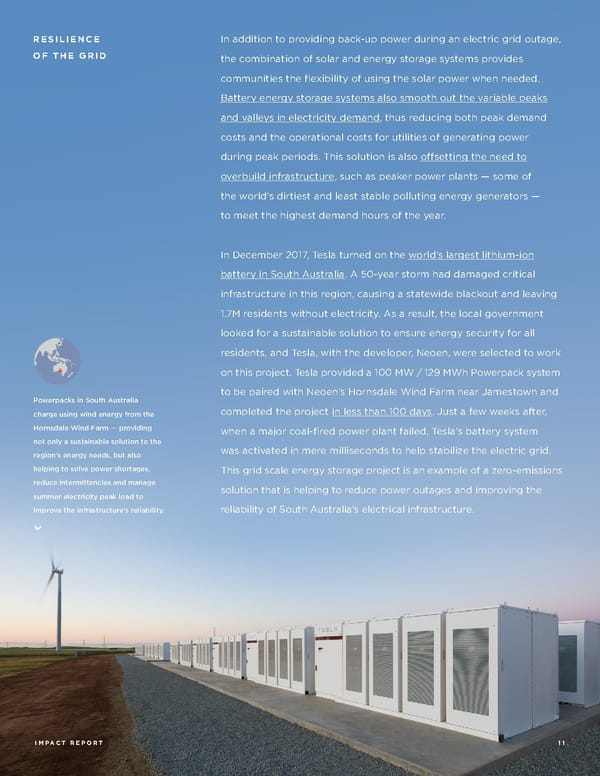RESILIENCE In addition to providing back-up power during an electric grid outage, OF THE GRID the combination of solar and energy storage systems provides communities the flexibility of using the solar power when needed. Battery energy storage systems also smooth out the variable peaks and valleys in electricity demand, thus reducing both peak demand costs and the operational costs for utilities of generating power during peak periods. This solution is also o!setting the need to overbuild infrastructure, such as peaker power plants — some of the world’s dirtiest and least stable polluting energy generators — to meet the highest demand hours of the year. In December 2017, Tesla turned on the world’s largest lithium-ion battery in South Australia. A 50-year storm had damaged critical infrastructure in this region, causing a statewide blackout and leaving 1.7M residents without electricity. As a result, the local government looked for a sustainable solution to ensure energy security for all residents, and Tesla, with the developer, Neoen, were selected to work on this project. Tesla provided a 100 MW / 129 MWh Powerpack system to be paired with Neoen’s Hornsdale Wind Farm near Jamestown and Powerpacks in South Australia charge using wind energy from the completed the project in less than 100 days. Just a few weeks after, Hornsdale Wind Farm — providing when a major coal-fired power plant failed, Tesla’s battery system not only a sustainable solution to the region’s energy needs, but also was activated in mere milliseconds to help stabilize the electric grid. helping to solve power shortages, This grid scale energy storage project is an example of a zero-emissions reduce intermittencies and manage solution that is helping to reduce power outages and improving the summer electricity peak load to improve the infrastructure’s reliability. reliability of South Australia’s electrical infrastructure. IMPACT REPORT 11
 Tesla Impact Report | 2019 Page 10 Page 12
Tesla Impact Report | 2019 Page 10 Page 12